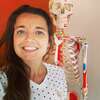Freinotomy: Between science and fashion, choose a professional balance
Braqueotomy, the surgical procedure to cut the tongue's frenulum, has become a growing trend, oscillating between medical necessity and fashion. While some circles present it as a miracle solution to a variety of problems, others question its trivialization. This article explores the complexity of this practice, underlining the importance of a balanced approach based on scientific evidence.
What is a freinotomy?
A brakeotomy is a procedure that involves cutting the tongue frenulum, a small tissue that connects the underside of the tongue to the floor of the mouth. It is generally considered when the frenulum is too short, a condition known as anquiloglossia, which can limit tongue mobility and cause problems with speech, chewing and breastfeeding in infants.
Sometimes a freinotomy is required
In some cases, freinotomy is undeniably necessary. Scientific evidence shows that severe ankyloglossia can hinder breastfeeding, leading to pain for the mother and insufficient weight gain in the infant. In addition, speech and mastication difficulties and oral disorders may appear, affecting the individual's quality of life. In these situations, after thorough evaluation by healthcare professionals, freinotomy can offer an effective solution, significantly improving oral functions. To determine whether a freinotomy should be considered, a rigorous clinical examination should be carried out, particularly of the palate, tongue mobility, cervical spine, etc.
Brakeotomy: a fashion trend with its excesses
However, a recent phenomenon is giving cause for concern: the proliferation of freinotomies performed without precise medical indications, driven by a fashionable trend. Parents and sometimes health professionals are opting for this procedure in the hope of preventing future problems, without any concrete proof of its effectiveness in such cases.
This approach, often influenced by anecdotal evidence or passing fads, runs the risk of subjecting children to unnecessary or even harmful procedures.
Isolated symptoms in both mother and baby (such as hiccups or reflux) do not necessarily indicate ankyloglossia. There are other avenues to investigate, as poor lingual mobility and sucking difficulties are not caused solely by the tongue-tie.
The importance of professional assessment
It's crucial to understand that the decision to perform a freinotomy should not be based on visual inspection of the tongue alone. Appearances can be deceptive, and an apparently short tongue frenulum does not necessarily impede function.
The observation of a frenulum or membrane under the tongue does not necessarily indicate the need for a freinotomy, and even if it is inserted on the tip of the tongue, lingual mobility and adjacent structures should be tested to assess function.
Functional assessments, conducted by specialists such as trained osteopaths, trained speech therapists, trained pediatricians and trained lactation consultants, are essential to determine whether the procedure is justified. These professionals use precise, evidence-based evaluation criteria to assess the actual impact of the tongue brake on oral function.
Towards a balanced approach
Caution and objectivity should characterize the approach to be taken to freinotomy. The aim is neither to blindly promote this intervention for all children with an apparent tongue-tie, nor to categorically reject it as an unnecessary practice. The balance lies in the careful evaluation of each individual case, based on scientific evidence and taking into account the potential benefits and risks.
It's vital not to fall into the opposite trap, as we're currently seeing in Gisèle Gremmo-Féger's article "La saga des freins buccaux restrictifs chez l'enfant allaité" (The saga of restrictive mouth brakes in breastfed children), which alerts us to the trend, but also affirms that some freinotomies are necessary!
Gisèle Gremmo-Féger's article "La saga des freins buccaux restrictifs chez l'enfant allaitement" (The saga of restrictive oral brakes in breast-fed inf ants) highlights a significant increase in freinotomy interventions without solid evidence of their necessity in all cases. It highlights the need for a rigorous and methodical assessment before proceeding with a freinotomy, based on current scientific knowledge which does not always confirm a direct link between short tongue brakes and breastfeeding difficulties. The article criticizes the tendency towards over-medicalization and rushed surgery, while recognizing that, in some cases, freinotomy can be beneficial when correctly indicated after a thorough assessment of the mother-child pair and breastfeeding practice.
Conclusion: towards an enlightened practice of freinotomy
A delicate procedure that oscillates between medical necessity and societal trend, brakeotomy requires a thoughtful approach based on in-depth knowledge. The rise in popularity of this procedure highlights the crucial importance of a rigorous professional assessment, far removed from superficial diagnoses and hasty decisions. While some cases clearly warrant intervention to improve patients' quality of life, the tendency to generalize this practice without thorough assessment highlights the risk of over-medicalization and unnecessary interventions.
The wisdom of medical practice lies in discernment and balance. Braqueotomy, when correctly indicated, can represent a valuable solution for people genuinely affected by tongue mobility restrictions. However, the need to oppose both blind adoption and categorical refutation of this procedure is imperative. Relying on comprehensive functional assessments and sound scientific evidence will ensure that the decision to perform a freinotomy is made in the patient's best interest, avoiding the extremes of fashion and unfounded opposition.
In a world where knowledge is rapidly evolving, it is essential to remain informed, critical and open to the evolution of practices based on new evidence. The future of brakeotomy, as with any medical intervention, lies in a balance between innovation, evidence and caution. By promoting a measured, individualized approach, the medical community can continue to offer the highest quality care, respectful of each patient's specific needs, while wisely navigating between medical necessity and societal trends.
Marie Messager
Osteopath D.O
2 rue Alexis de Tocqueville
78000 Versailles

